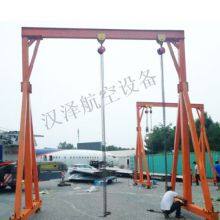1. Prepare well before homework, including preparing and inspecting lifting equipment, protective facilities, and auxiliary equipment; Determine and clean up the location of falling objects, striving for flatness and spaciousness.
2. Improve safety technology: The binding points should be determined based on the shape and center of gravity position; When there are sharp objects, wooden boards, tires, burlap bags, straw bags, etc. should be padded to prevent damage to the steel wire rope; Heavy objects should consider whether the removal of the lifting object is easy to prevent it from pressing or damaging the lifting rope; When lifting various loose parts, appropriate fixtures must be used to ensure smooth lifting; Prevent tilting and lifting.
3. Accurate command signal: The command signal for lifting and hoisting must be communicated according to the prescribed standards, especially for crane drivers. They must confirm the command signal, hanging form, operating channel, and landing space before proceeding with the operation.
4. Choose a safe location: During the lifting process, due to the impact, swinging, and crossing of the work area by the lifted object, it is necessary to choose a safe location based on the specific conditions of the work area to effectively prevent lifting injuries.

Send Inquiry to This Supplier
You May Also Like
-
Aircraft Air Conditioning Heat Backflow EquipmentUS$ 200 - 1000MOQ: 3 Bags
-
Hydraulic ElevatorUS$ 50 - 1000MOQ: 5 Bags
-
Aircraft Hand Cranked Reverse Thrust PumpUS$ 50 - 1000MOQ: 5 Bags
-
Wheel Changing ToolUS$ 50 - 1000MOQ: 3 Bags
-
IDG Refueling TruckUS$ 50 - 1000MOQ: 5 Bags
-
Aircraft Mooring RopeUS$ 50 - 1000MOQ: 5 Bags
-
Aircraft Engine CoverUS$ 50 - 1000MOQ: 5 Bags
-
Aircraft Wheel Blocking ToolsUS$ 50 - 1000MOQ: 3 Bags
-
Aircraft Inflation ToolingUS$ 200 - 1000MOQ: 3 Bags
-
Aircraft Tire Pressure Measurement ToolUS$ 50 - 1000MOQ: 5 Bags

















